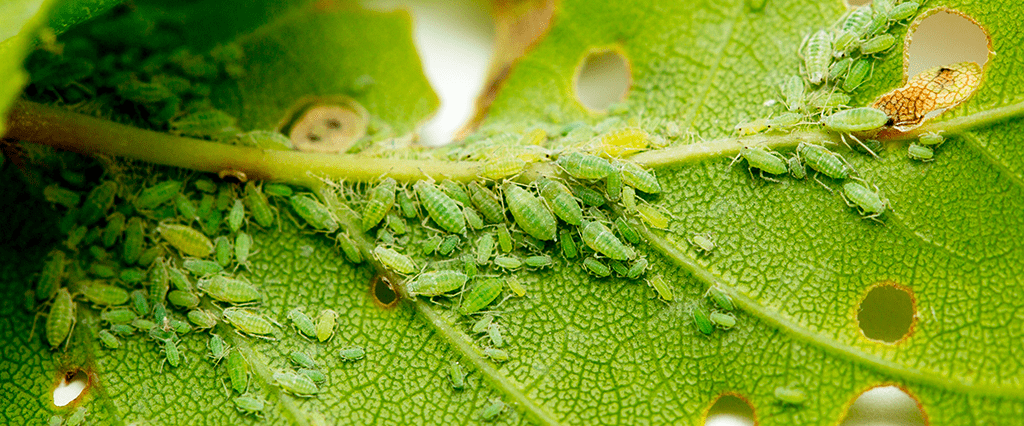By Tony Manhart and Cayenne Diane
Growing peppers is a delicious and enjoyable experience. Not only do freshly picked peppers taste great, but you can also take pride in the fact that you grew them yourself. If you plan to grow them, it is important to know common issues when growing pepper plants and how to fix them.
Common Issues When Growing Pepper Plants and How to Fix Them
Not only do peppers taste great, but they are also healthy for you. However, some common issues can occur when you grow them. Fortunately, once you identify the issue, you can fix the problem, allowing your peppers to thrive once again.
Blossom End Rot
One of the most frustrating things when growing your peppers is to wait several weeks for them to ripen only to find out they are rotted. If your pepper has gone bad, it normally is caused by blossom end rot. The disorder first appears as a brown discoloration on the blossom end of the fruit (the end opposite the stem). On chile peppers, the spot occasionally will be off to the side of the blossom end.

Blossom end rot typically occurs because of a calcium deficiency in the plant. Calcium is vital for the cell walls of the pepper to form. Without it the pepper will grow too quickly for it to supply an efficient amount of calcium, leading to it rotting and the walls collapsing in.
No fungi, bacteria, or any other living disease organisms are known to cause the condition, and it is not spread from one plant to another.
Blossom end rot can happen because of insufficient calcium in the soil or the plants’ inability to take up sufficient amounts of calcium. If your peppers experience extreme heat causing the soil to dry out too much, this makes calcium unavailable to your plants. If the plant can’t take up enough water for its needs regularly, it also cannot take up the proper amount of calcium. Excess amounts of nitrogen, potassium, sodium, and ammonium can also cause problems. Very wet or very dry conditions can also cause this.
PREVENTION: To prevent blossom end rot, water carefully so the soil is never too wet or too dry. Use moderate amounts of fertilizer that is not ammonium-based and is low in nitrogen and potassium. A mix of water and Epsom salt can also be sprayed on the plant to help increase its calcium levels. Also adding eggshells to your soil will provide additional calcium.
Can I cut off the rot and use the rest of the pepper? Yes!
Flowers Falling Off
In some cases, the flowers may fall off of your plant, which means no peppers will be produced. Once you figure out why the flowers are falling off, you can get your plant back to being healthy and producing tasty peppers.
One of the most common reasons flowers fall off is temperature. The optimum temperature for peppers is typically between 70-85 degrees Fahrenheit. When temperatures drop below 60 degrees Fahrenheit, the flowers can fall off. To prevent flowers from falling off, cover your peppers if the temperatures drop too low.
Lack of pollination can also cause the flowers to drop. You can also plant bright flowers near your peppers to invite pollinators and make sure your plant has good airflow.
Wilting Plants
If your pepper plant is wilting, it is most likely not getting enough water. Pepper plants may also temporarily wilt in extremely hot temperatures, like over 90 degrees, but will usually perk up again once temps lower if they are adequately being watered. If that is not the case, your pepper plant might have fungal wilt. 😲 Oh no!

Peppers are vulnerable to a few fungal pathogens, but the most likely diseases that cause wilt are verticillium wilt and phytophthora root rot. Verticillium wilt causes yellowing and drooping of leaves. Leaf edges may also roll inward as wilting occurs. Unfortunately, there are no effective chemical controls for plants already infected with these diseases and it is best to destroy the plant so the disease does not spread to nearby plants. Be aware that the pathogens are also present in the soil.
Yellowing Leaves
If you notice yellowing leaves on your pepper plant, it is most likely caused by a lack of water and nutrients. If the leaves begin to turn yellow, make sure you water your plant regularly. Also, be sure to fertilize the soil so it has adequate nutrients.
Aphids
Aphids are nasty insects that can destroy your pepper plants. They attach themselves to the leaves and suck the sap right out of your plant. To get rid of them, you can use a hose to wash them away or use neem oil. You can also sprinkle diatomaceous earth on the leaves to get rid of these nasty pests. Note that aphids can vary widely in color, including green, orange, yellow, red, and black.

Introducing beneficial bugs can also help naturally take care of pests. Ladybugs and praying mantises are a couple of great allies to have in the garden. Ladybugs can eat some 50 aphids a day and their larvae will eat their weight in aphids each day. The praying mantis has an enormous appetite, eating various aphids, leafhoppers, mosquitoes, and caterpillars.
Perfect Peppers
Peppers are great plants to grow no matter if you’re a seasoned pro or a beginner gardener. Though some common issues might occur, with the right care you can have healthy pepper plants.🌶

Guest Contributor, Tony Manhart is founder and editor in chief at Gardening Dream. Tony’s enthusiasm and rich experience in all things related to growing plants have led him to share his abundant knowledge with gardening aficionados all over the world. When he is not working around his own garden, Tony spends his time writing tips and tricks on a variety of subjects related to plant cultivation and soil maintenance.






